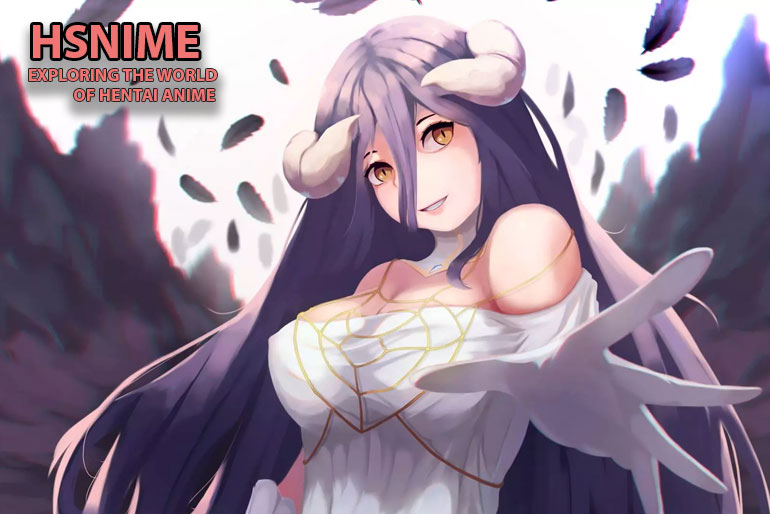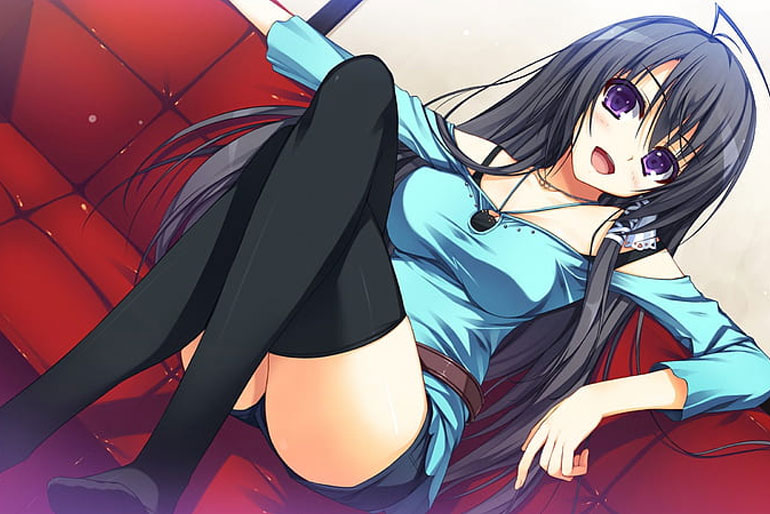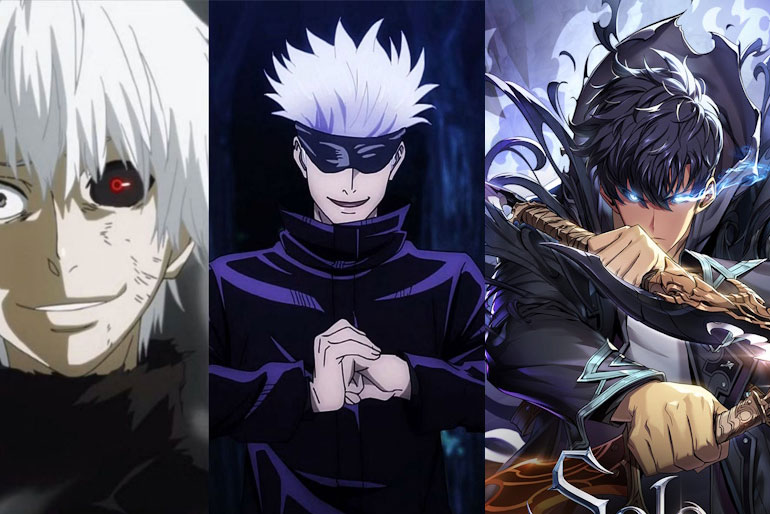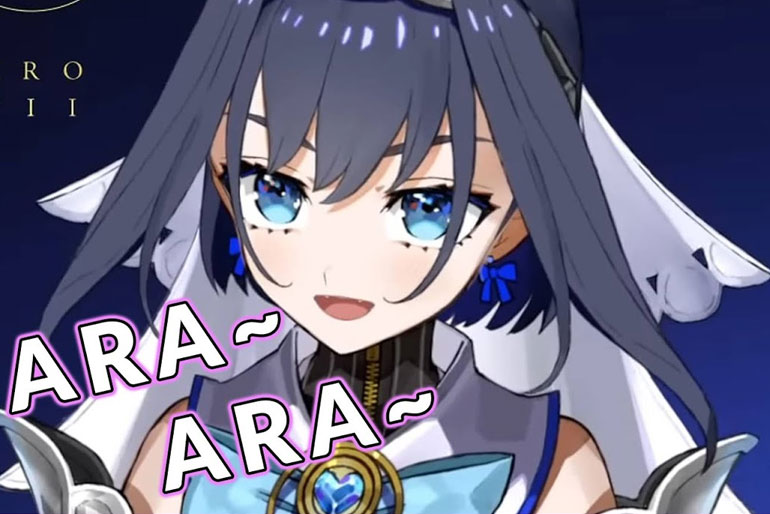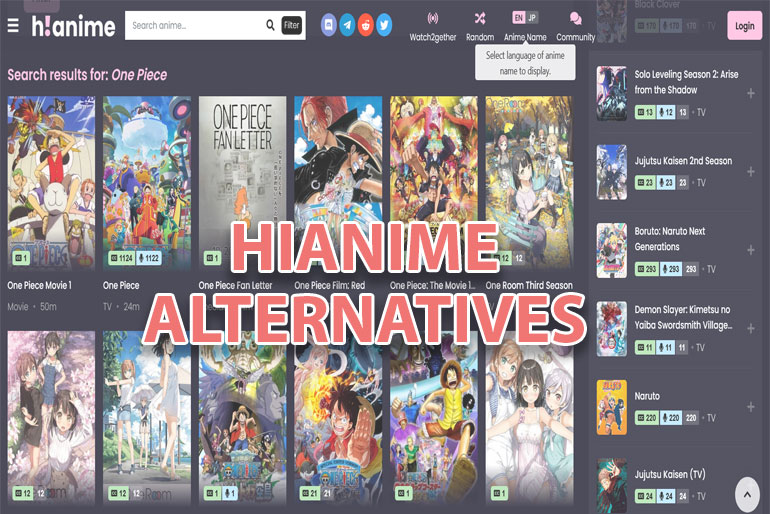Hsnime is a stylized term that appears to reference hentai anime, the realm of adult-oriented Japanese animation known for explicit sexual content. In other words, hsnime likely denotes the same idea as “hentai” – Japanese animated pornography. This term is not commonly found in formal definitions, but in online fan communities it seems to be used as a playful or evasive way to refer to hentai anime (possibly to avoid filters or censorship). In this article, we’ll provide a broad overview of what hentai anime entails: its possible interpretations, origins, common themes, who watches it, how it’s viewed culturally, and the controversies and debates surrounding it. The goal is to explain hsnime (hentai anime) in simple, clear language for a general audience.
Origins of the Term and Genre
The word hentai (変態) in Japanese originally means “abnormal” or “perverse,” and it was not historically used to label a genre of animation. In fact, using hentai to describe erotic comics or cartoons is largely a Western convention. Japanese speakers might call adult comics ero manga or use the letter “H” (pronounced etchi) as slang for something sexual, but hentai in Japan typically refers to a kind of extreme perversion rather than a general term for all erotic content. Western anime fans in the 1990s adopted hentai as a catch-all label for animated pornography from Japan, and the term stuck. So, when someone says hentai anime (or stylizations like hsnime or hanime), they mean animated works with overtly sexual, pornographic content, as understood in global fan culture.
The concept of erotic or pornographic animation has roots going back further than you might expect. Sexual themes in Japanese art are not new – for example, woodblock prints in the 18th–19th century (called shunga) depicted erotic scenes. A famous 1814 artwork by Hokusai, “The Dream of the Fisherman’s Wife,” even showed a woman intertwined with octopuses, essentially a centuries-old predecessor to the fantastical themes seen in modern hentai. Early on, Japan experimented with erotic animation: a short erotic anime film was reportedly started in 1932 (though it was seized by police before completion). However, the modern hentai anime genre truly began to take shape in the 1980s with the advent of home video.
In 1984, the first widely recognized hentai original video animation (OVA) was released: a series bluntly titled “Lolita Anime,” produced by a studio called Wonder Kids. This series (as the name suggests) dove straight into taboo content (including underage and non-consensual themes) and set a precedent for the explicit nature of the genre. It was soon followed by other adult anime projects. The mid-1980s saw the launch of “Cream Lemon,” an anthology of erotic anime stories that ran for many years and helped establish hentai as a distinct category. These early works were sold on VHS tapes to adult audiences in Japan since they obviously could not be shown on TV.
By the late 1980s, some hentai anime began to reach international audiences – often in underground or niche markets at first. One landmark title was “Urotsukidōji: Legend of the Overfiend” (1987), an extremely violent and sexual anime that became infamous abroad. Interestingly, some of the first hentai titles that made it to Western countries were exactly those that had navigated Japan’s strict obscenity laws through creative means. For example, Japanese law long required censorship of explicit genital imagery in pornographic mediae. In 1986, artist Toshio Maeda introduced tentacle-like monsters as sexual partners in anime as a clever way to bypass these censorship rules (since the law forbade showing human genitals, a tentacle was a loophole). This innovation led to the “tentacle porn” trope – an outrageous but enduring feature of hentai anime. Ironically, these censorship-driven creations became hits overseas; they were among the first hentai videos legally imported to North America and Europe, and they attracted attention for their shock value. Early Western releases were often heavily edited due to their extreme content – for instance, the UK version of Urotsukidōji cut out many of the most graphic violent and sexual scenes (especially the tentacle assaults).
The term hentai anime itself gained currency among English-speaking fans in the 1990s as the internet and fan communities grew. By the year 2000, “hentai” had become astonishingly popular as a search term on the internet – it was reportedly the 41st most-searched word online, ranking even higher than the word “anime” which was 99th. This indicates how prominently hentai stood out in early internet culture. Over time, various slang terms and stylizations emerged. “H-anime” (with H standing for hentai) is one shorthand, and “hanime” (or as in our topic, hsnime) is essentially a stylized way to blend the words “hentai” and “anime.” In practice, all these terms refer to the same thing: Japanese animated pornographic content. Some fans half-jokingly use hanime to mean “hentai with plot” or “borderline hentai” (implying a story-driven softcore approach), but there’s no strict distinction – generally, if you say hanime/hsnime, people will assume you mean hentai anime.
Themes and Content in Hentai Anime
Hentai anime spans a wide range of themes and storylines, but its defining feature is explicit sexual content. These are cartoons intended for adults only, often featuring graphic depictions of sex. The art style is typically the same anime style used in mainstream Japanese animation – big eyes, vibrant hair colors, fantastical settings – but cranked up with erotic imagery. Depending on the title, a hentai anime might be a short film, a series of OVA episodes (often 20–30 minutes each), or even a longer feature. Many are adaptations of adult manga or eroge (erotic games), while others are original stories.
It’s a misconception that hentai anime is purely sex with no storyline; while some productions are indeed just excuse plots for stringing together adult scenes, others incorporate elaborate genres and plots (from science fiction and fantasy to romance or horror). For example, some hentai have surprisingly complex sci-fi backdrops or melodramatic story arcs, albeit always with a generous dose of erotica. That said, the focus is invariably on sexual scenarios. Common themes and tropes include:
- Romance and “Vanilla” Encounters: Some hentai depict consensual relationships, like a boyfriend-girlfriend exploring intimacy, or love stories that just happen to be very sexually explicit. These are often called “vanilla” hentai by fans, meaning relatively straightforward and loving sexual relationships (as opposed to fetishes or extreme content).
- Taboo Fantasies: A significant portion delves into taboo or forbidden relationships – for instance, teacher and student affairs, step-siblings, or other incest-themed storylines. These scenarios are popular in the genre but also among the most controversial, given their subject matter. Hentai creators often push boundaries with such forbidden setups, framing them in a fantasy context.
- Non-Consensual Scenarios: Unfortunately (and infamously), rape and forced sexual situations appear in many hentai anime. This might range from a villainous character assaulting others to fantastical creatures overpowering a victim. It’s a genre hallmark that much hentai is not depicting happy consensual intimacy but rather very dark scenarios of coercion – something that draws criticism (as we’ll discuss later). It’s worth noting that in the realm of hentai, even these extreme plots are fictional cartoons – but they are certainly not shy about portraying sexual violence.
- Fantasy and Science Fiction Elements: Hentai anime often introduces supernatural or sci-fi elements. A notorious example is the tentacle monster trope – creatures with tentacles or demons that engage in sexual acts with humans. These ideas flourish in hentai because animation isn’t limited by reality; artists can create monsters, aliens, or magical beings involved in erotic encounters. Fans of this subgenre enjoy the sheer imagination (or absurdity) of such scenarios. Other fantasy elements include spells, transformations, or alternate worlds where the normal rules of society (and physics) don’t apply.
- Yaoi, Yuri, and Niche Subgenres: Not all hentai is about heterosexual content. Yaoi (also known as Boys’ Love) refers to male-male erotic stories, often created by and for women, which can be very explicit – essentially the hentai version of gay romance. Yuri is the female-female counterpart. These subgenres cater to specific audiences (e.g. heterosexual women may enjoy yaoi hentai anime featuring male couples). There are also works featuring BDSM (bondage and discipline, domination/submission), monster girls, futanari (hermaphroditic characters), and virtually any fetish one could imagine, drawn into animated form. The breadth of content is vast.
- Art Style and Presentation: Hentai anime typically features attractive (often exaggeratedly so) character designs – men are often drawn in a generic or rough style, whereas women are usually drawn with an emphasis on a voluptuous figure (slim waist, large breasts are very common. Many works have high-quality art and animation, especially modern ones; however, the production values vary widely. Some low-budget hentai animations are infamous for reusing frames or having awkward, simplistic animation. In contrast, others are produced with almost the same level of quality as mainstream anime. There is also a trend where creators try to include more plot and characterization so that the sexual content has context – a response to viewers who prefer a bit of story with their erotic content.
It’s important to differentiate hentai from ecchi in anime terminology. Ecchi (from the letter “H”) refers to mildly sexual content – think of a regular TV anime that has risqué humor, panty shots, or partial nudity but stops short of showing actual sex. Ecchi anime is like an R-rated teen comedy – suggestive but not explicit. Hentai, on the other hand, crosses firmly into X-rated territory with explicit depictions. In Western fan usage, ecchi is “softcore” and hentai is “hardcore.” (Interestingly, in Japanese, both words stem from the idea of perversion, and the hardcore/softcore division is a bit artificial – but it’s a useful distinction for viewers.) So, one could think of hanime/hsnime as essentially hentai anime – animations where the primary purpose is to show sexual acts, in contrast to ecchi anime which tease or imply sexual content without fully depicting it.
Audience and Cultural Reception
Who watches hentai anime? The obvious answer is adults who are looking for animated erotic content. Within Japan, hentai anime (and adult manga) are part of the broader otaku culture but occupy a somewhat shadowy niche. Walk into an anime/manga specialty store in areas like Akihabara (Tokyo) and you’ll find a section – often curtained off or clearly labeled for adults – selling hentai videos, DVDs, and manga. These stores treat hentai as just another product line (albeit restricted to age 18+), and fans can purchase them similarly to how one might buy regular anime. Outside of Japan, for many years hentai was something traded among dedicated anime fans, sometimes sold under the table at comic shops or accessed via internet file-sharing. Today, it’s far more accessible globally thanks to online streaming and download sites. There are even popular websites dedicated to hentai content (for instance, hanime.tv is known in fan circles for streaming hentai anime, and there are legal platforms like Fakku that distribute adult manga and some anime).
One striking aspect of hentai’s global popularity is how it went from niche to mainstream within online culture. As mentioned, by the early 2000s, “hentai” was one of the top search terms on the internet. In the age of large porn websites, hentai holds its own as a highly sought-after category. Pornhub’s analytics for 2017, for example, showed “Hentai” was the second most searched term of the year (only beaten by “lesbian”) on that massive platform. In other words, animated porn was nearly as popular as any live-action genre among global users. By 2022, hentai continued to dominate trends – in fact, statistics indicated that “hentai” and “Japanese” were the top two most-searched keywords worldwide on a major adult site that year. These data points illustrate that the audience for hentai anime is huge and international. What was once a subculture of anime fandom has become a significant segment of online adult entertainment.
The core demographic for hentai has traditionally been young adult men – much of it is clearly produced with a male heterosexual viewer in mind (hence the prevalence of female characters in submissive roles or with exaggerated sexual features). However, it’s a misconception that only men watch hentai. The audience has diversified over time. Women also consume hentai anime and manga, especially certain subgenres. For instance, many female fans enjoy explicit Boys’ Love (yaoi) comics or animations, and some are even creators in that space. Surveys and reports have noted that while men are the majority of hentai consumers, a sizable minority are women. Some industry observers have commented that hentai manga actually attracts a “diverse readership, which of course includes women”. Women may not always participate in the same online forums about it, but they do partake in erotic doujinshi (fan-made comics) and other forms of hentai, particularly those tailored to different tastes (like romantic erotica or gay content). The existence of female otaku who openly admit to enjoying hentai (especially in the context of fan-made works) has been documented in otaku culture research.
Culturally, hentai anime occupies an interesting place. In Japan, it’s somewhat tolerated but kept discreet – a kind of “open secret.” People know this material exists and that it’s part of the manga/anime industry, but it’s not openly discussed in polite society. There’s a partial overlap with the broader adult video industry (some hentai titles are produced by companies that specialize in adult entertainment) and with the doujin (fan comic) scene where adult parodies of popular anime are common. In the West, hentai has been both a source of humor and stigma. On one hand, it’s frequently joked about – memes about “men of culture” (a tongue-in-cheek way some fans refer to hentai aficionados) or references to “tentacle hentai” have entered internet slang. Even people who have never watched anime might have heard the word “hentai” in some context, given how pervasive references can be on forums or social media. On the other hand, openly admitting one enjoys hentai might still carry stigma; it’s porn, after all, and cartoon porn at that, which some find strange or embarrassing.
Anime conventions in North America and Europe often mirror this duality: they might have late-night hentai screening rooms or 18+ panels (so clearly there is an audience eager to watch or discuss it), but those events are usually sectioned off from the main programming. There’s a mix of genuine fan appreciation and an ironic, jokey fandom around hentai in the West. Some anime fans view hentai as just another genre of anime (no different from how some people watch live-action adult films), while others distance themselves from it due to its more extreme content or because they consider it separate from “respectable” anime fandom.
It’s also worth noting that hentai has evolved with fan expectations. Modern audiences often prefer higher production quality and even some storyline with their adult animation. As one analysis put it, the hentai audience each year “desires better quality and storylines” and creative content that pushes the envelope. This demand has led to hentai works that invest more in animation quality or narrative. So, while the stereotype of hentai is that it’s just cheaply made smut, there are examples that defy that stereotype. Some series are actually well-animated and attempt interesting plots (within the limits of the genre). This blurs the line a bit between mainstream anime and hentai – exemplified by a few titles that have both explicit and non-explicit edits. (For example, a show might release a censored version for general streaming and an uncensored hentai version on DVD for adults, though this is more common with softcore ecchi series than full hentai.)
Controversies and Debates
Like any form of pornography – especially animated pornography – hentai (hsnime) comes with its share of controversies and debates. Below are some of the major points of discussion surrounding this genre:
- Censorship and Legal Issues: Hentai anime exists in a complex legal space. In Japan, censorship laws require that actual genitalia not be shown in pornographic media, which is why hentai films usually have mosaics or bars obscuring those parts (or they employ creative workarounds like depicting sex with monsters). The infamous tentacle scenes mentioned earlier were a direct result of artists trying to comply with these laws while still delivering explicit content. Overseas, laws vary – some countries have banned certain hentai works outright, especially if they involve characters who appear underage or extreme sexual violence. For example, the hentai anime La Blue Girl (an early 1990s series about a teenage ninja girl) had to modify content for Western release – the U.S. distributor changed the heroine’s age from 16 to 18 and cut out a particularly bizarre scene with a dwarf character, among other edits. In the UK, that title was completely barred by censors who refused to classify it for release. There have also been attempts within Japan to further regulate hentai subgenres (such as lobbying to ban lolicon content, which depicts very youthful characters in sexual scenarios). As of mid-2010s, Japan did pass laws banning possession of real child pornography, but excluded manga/anime from those bans after heavy debate. This remains contentious, with some arguing that drawn depictions of minors should also be illegal, and others defending them under free expression since no real person is harmed. Censorship of hentai thus continues to be a hot topic: creators find ways to evade restrictions, and regulators periodically consider new rules.
- Extreme Content and Morality: The ethical debate around hentai largely centers on its often extreme themes. Critics point out that a lot of hentai anime portrays scenarios that would be deeply problematic (and illegal) in real life – rape, incest, coercion, sometimes bestiality or very young characters. This raises the question: does consuming such fictional content have negative effects on individuals or society? Some research suggests there are reasons to be concerned. Recent studies have found correlations between consuming hentai and an increase in rape myth acceptance – essentially, becoming desensitized to or more accepting of false beliefs about sexual violence (such as “victims secretly enjoy it” or other harmful stereotypes). The argument here is that because hentai frequently shows women in non-consensual situations eventually responding positively (a common trope) or portrays sexual violence as “no big deal,” it might normalize these ideas for viewers. Likewise, the normalization of incest or very young-looking characters in hentai can be viewed as potentially encouraging unhealthy fantasies. However, it’s important to note that correlation is not causation; these studies raise alarms, but it’s an ongoing debate to what extent fiction influences reality in this context. Many fans and creators argue that hentai is pure fantasy and an outlet for implausible or taboo desires that doesn’t translate into real-world behavior. They often use the counterpoint that the existence of violent video games doesn’t necessarily make people violent, so erotic cartoons shouldn’t be automatically blamed for influencing behavior. The truth likely lies somewhere in between, and it’s a subject of active discussion among psychologists and sociologists. Regardless, the content in hentai is undoubtedly extreme in many cases, which is why even within anime fandom, some see it as “too far” or morally questionable.
- Objectification and Gender Representation: Hentai anime has been criticized, including by feminists, for how it portrays women (and men, though women are usually front and center). The typical hentai scenario is often male-dominated – a male protagonist with multiple willing female partners (the harem scenario), or a male perpetrator and female victim in non-consensual scenes, etc. Women in hentai are frequently depicted as hyper-sexualized objects of desire, with unrealistic bodies and often shallow characterization. Even when a female character is the “lead,” the plot usually revolves around her sexual exploitation or adventures. This has led to claims that hentai reinforces misogynistic attitudes and reduces women to mere sex objects. One particular criticism from cultural studies is that hentai feeds into certain stereotypes: for instance, the submissive Asian woman trope. In many hentai, the female characters (who are often Japanese schoolgirls, housewives, etc.) are portrayed as demure or are “trained” into enjoyment, playing into the old stereotype of Asian women being naturally submissive. Scholars have noted that Western consumers of hentai may develop or reinforce a fetishized view of Japanese women – noticing that in hentai, even if the characters’ race isn’t explicit, there are often cues highlighting their “Japanese-ness” (like wearing traditional school uniforms or kimonos, or being set in Japan). This could bolster exoticized fantasies about Asian women. On the flip side, defenders say hentai is no more objectifying than any other form of porn – in fact, some argue it can be more egalitarian in certain ways. For example, since hentai is drawn, you also have hentai made by women for women (e.g. yaoi content), which complicates the notion that it’s all about female objectification. Additionally, some hentai titles flip the script and have dominant female characters or cater to fetishes where men are submissive. The “man of culture” meme within the community is a tongue-in-cheek way fans acknowledge the absurdity and guilty pleasure of hentai content. Still, the general critique holds: if one is looking for progressive gender representation, hentai anime is usually not the place to find it.
- Artistic Value vs. Pornography: A broader debate is whether hentai should be seen purely as pornography or if any artistic or cultural value can be ascribed to it. Enthusiasts sometimes praise certain hentai works for their artwork, storytelling, or creativity. For instance, some of the animation in high-end hentai can be quite skilled, and a few titles have cult followings for their narrative (for example, Bible Black is often cited by fans as a hentai with a complex plot beyond just the sex scenes). Detractors, however, will say that regardless of animation quality, the primary purpose is titillation, not art. In Japan, the legal distinction is stark: hentai anime and manga are generally not considered “art” in the way an 18+ avant-garde film might be. They are treated as adult entertainment. This was highlighted in the past when even acclaimed filmmakers faced obscenity charges for sexual content, yet anime and manga weren’t given artistic leeway under those standards. The conversation here intersects with views on pornography in general – some believe porn can have artistic elements or at least cultural significance, while others dismiss it outright. Hentai, being a niche within a niche (porn + animation), has not been deeply analyzed in mainstream art critique, but it certainly has had an impact on popular culture and the anime industry’s economy.
In summary, hsnime or hentai anime is a genre that pushes boundaries and thus constantly tests the limits of law, societal norms, and personal comfort levels. It thrives in a space where imagination runs wild – sometimes with disturbing results, sometimes just indulging in playful fantasy. For supporters, it’s a form of expression and a facet of otaku culture that serves a dedicated fanbase. For critics, it raises red flags about representation, consent, and the potential effect on viewers’ attitudes.
Related Article: HiAnime
Conclusion
Hsnime, as a stylized reference to hentai anime, represents a unique and noteworthy aspect of Japanese pop culture and its global fandom. From its origins in underground 1980s animations to its widespread availability on the internet today, hentai anime has evolved and grown in popularity, all while retaining its transgressive spirit. It encompasses everything from simple erotic escapism to highly imaginative (and sometimes shockingly extreme) storytelling. For a general audience trying to understand this phenomenon, it’s best described as animated adult entertainment from Japan, with its own set of tropes and subculture.
Understanding hentai anime involves recognizing the dualities it embodies: fantasy vs. reality, art vs. obscenity, liberation vs. objectification. Fans often approach it with a mix of curiosity, humor, and clandestine enjoyment. Broader society approaches it with equal parts fascination and concern. By looking at hsnime in context – its origins, themes, audience, and controversies – we gain insight not just into a genre of animation, but also into how culture grapples with sexual expression in creative media. Whether one views hentai anime as harmless fantasy or problematic media, there’s no doubt it has made its mark as a distinctive (and very adult) corner of the anime world.
Ultimately, the topic of hsnime/hentai is a reminder of the diversity within anime: from the cute and innocent to the dark and explicit, anime covers it all. And as long as there is an audience seeking out these “forbidden” cartoons, hentai anime will continue to be produced, continuing to spark debates about its place in entertainment and society.

